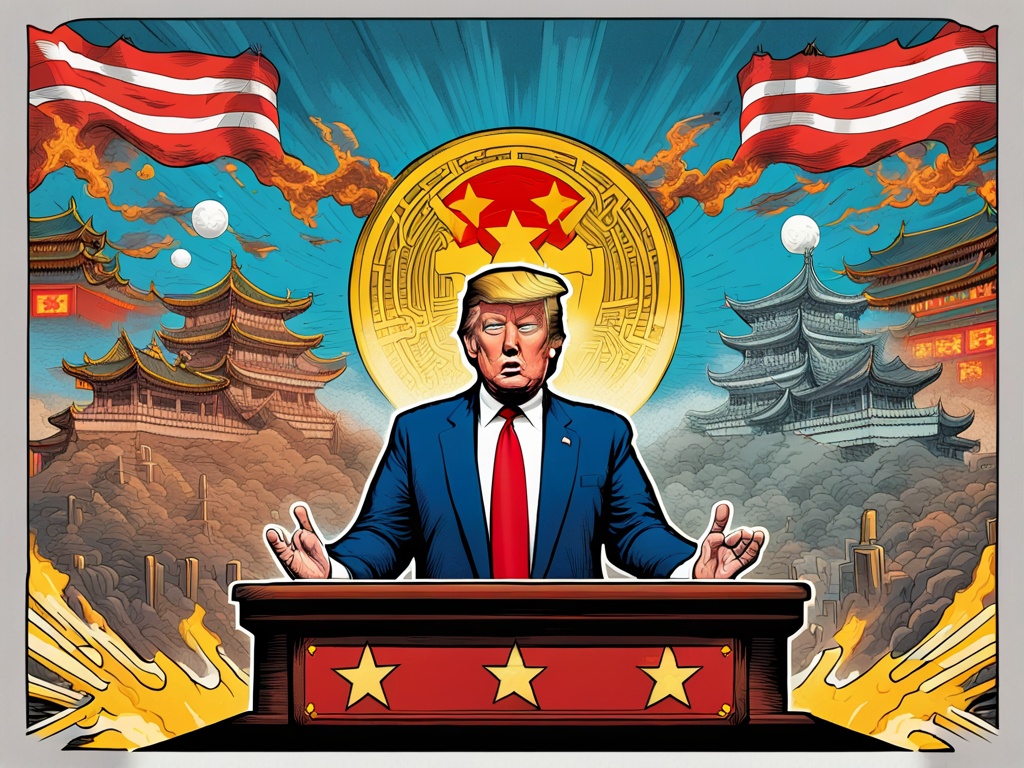Trump’s Ongoing Challenge in the Tariff War with China 📉
Donald Trump is engaging in a challenging tariff conflict with China, aimed at curbing Beijing’s growing influence. Years of imposing trade barriers have resulted in a complex scenario where the U.S. is contending with an assertive and strategic China. With Trump’s anticipated return to the political stage, the stakes are higher. The outcome of this conflict remains uncertain as both nations strive for technological supremacy.
The President’s Approach to Trade Deficits and Tariffs 💼
Since his first term, Donald Trump has utilized aggressive strategies to prevent China from surpassing the U.S. as the leading economic and technological power. His administration implemented punitive tariffs on Chinese imports, striving to balance trade deficits and restrain China’s economic expansion. Central to Trump’s vision is the motto of “American supremacy,” evident in his campaign phrases about hiring and buying American-made products.
However, the landscape has evolved significantly over the years. Upon his return to the political arena, Trump faces a China that has become increasingly savvy and resilient. The trade conflict, which initially aimed to restrict Chinese exports, continues to shape the narrative as the U.S. grapples with economic challenges.
Historical Context: The Turning Point of 2001 📅
China’s accession to the World Trade Organization in 2001 marked a pivotal moment in international trade. This event reduced trade barriers, facilitating China’s ability to export low-cost products globally. This era of Chinese exports greatly contributed to lifting millions into the middle class.
Concurrently, in the same period, Trump announced his presidential candidacy while China unveiled its ambitious “Made in China 2025” initiative. This ten-year plan is designed to elevate China’s technological capabilities by focusing on innovation and securing national security interests, prompting responses from U.S. policymakers across multiple administrations.
Efforts to Counter China’s Economic Ascent 🔍
The United States has been undertaking measures to contain China’s expansion, notably through tariffs and revised trade policies. Trump’s administration primarily aimed to raise costs for Chinese businesses exporting to the U.S., thereby addressing the significant trade deficit—an imbalance indicating that imports surpass exports.
Current President Biden has kept Trump-era tariffs in place, responding to economic impacts throughout this year. Evidence shows a notable decrease in the trade deficit, the smallest since 2010, attributed to reduced imports from China. However, China’s manufacturing capabilities continue to thrive, leading its trade surplus to historic levels compared to global GDP.
High-Tech Export Controls and Their Impact 🖥️
Moreover, Trump’s administration implemented strict controls on high-tech exports to China, a strategy that has persisted under Biden. This created obstacles in transferring sensitive U.S. technologies, exemplified by the restrictions placed on Huawei. The pressure extended to allies, urging them not to facilitate Huawei’s expansion.
In recent developments, China has encountered barriers concerning advanced semiconductor technology. Nonetheless, the stronghold these policies had on China has had the unintended consequence of accelerating its push towards technological independence. Under President Xi Jinping, China has been aggressive in fostering local innovation, including significant investments in research and patents.
China’s Technology Advancements 📈
Evidence of China’s advancements surfaced prominently this year when the Mate 60 smartphone showcased a semiconductor exceeding prior expectations. Analysts suggested that instead of being 8 to 10 years behind, China’s technological gap is now closer to 4 to 5 years compared to the U.S. This raises concerns over the potential implications of China’s self-sufficiency in sensitive technologies.
Furthermore, the growth of China’s semiconductor ecosystem reflects its relentless quest for technological innovation. Despite the barriers, major Chinese companies are investing heavily in competitive technologies, aiming to bridge the gap with global leaders in high-tech sectors.
The Electric Vehicle Market Dynamics 🚗
In the electric vehicle domain, China is also making impressive strides. Major automakers, such as BYD, have found ways to circumvent existing trade barriers by establishing manufacturing sites outside China. This enables them to penetrate markets without facing extensive tariffs.
Trump has indicated a desire to impose stringent tariff measures on Chinese electric vehicles and batteries in his potential second term. His pledges to protect U.S. automotive interests reflect ongoing concerns over national security regarding data collection through EV technologies.
Hot Take: Future Prospects of U.S.-China Trade Relations 🔮
Looking ahead, although tariffs have managed to decrease the trade deficit, they have not effectively stunted China’s overall export growth. The ambitious goals outlined in the “Made in China 2025” strategy remain largely on track. As Trump aims to renew efforts against China, observers anticipate continued pressure on Beijing, yet skepticism abounds as to the overall efficacy of these tactics. The future path in U.S.-China relations promises to be fraught with challenges as both nations relentlessly pursue technological and economic superiority.





 By
By
 By
By
 By
By
 By
By
 By
By